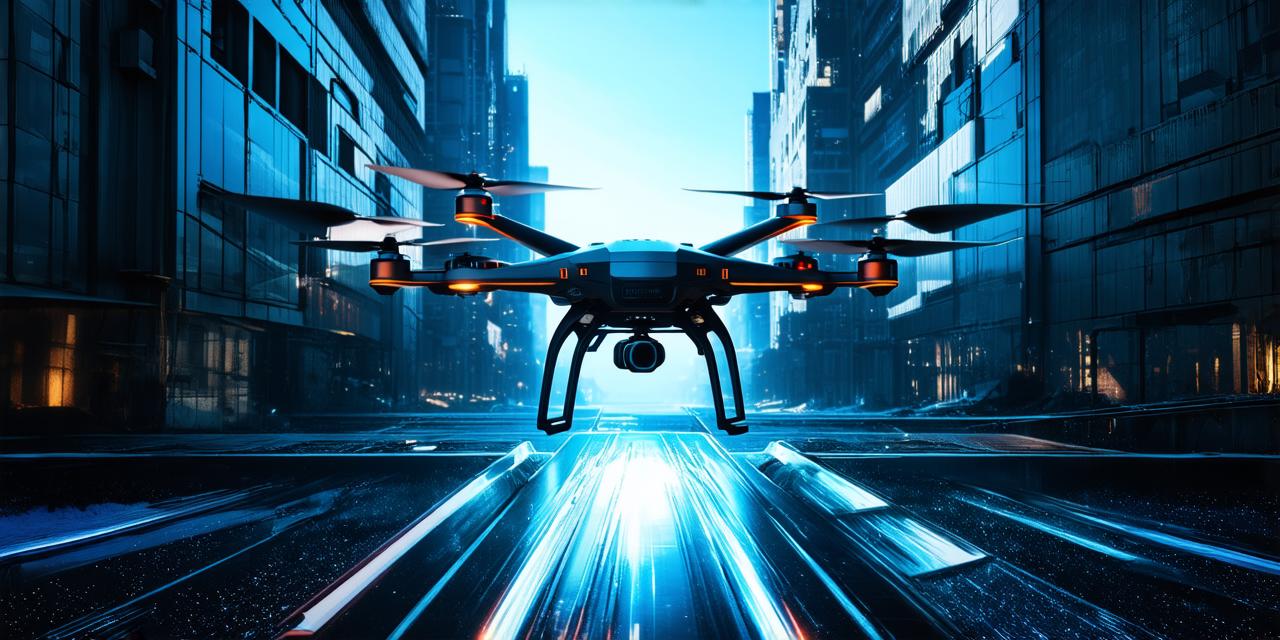Virtual reality (VR) technology is rapidly evolving and being incorporated into various industries such as gaming, education, healthcare, and entertainment. One of the most exciting applications of VR technology is in drones. Drones equipped with VR cameras can provide immersive aerial views that are not possible with traditional cameras.
Understanding the Basics of Drones and VR
A drone is an unmanned aerial vehicle (UAV) that is designed for remote-controlled flight. Drones come in various shapes, sizes, and configurations, with some being designed for specific applications such as photography, surveillance, or delivery services. VR technology, on the other hand, is a computer-generated simulation that creates an immersive experience for users by tracking their movements and adjusting the environment accordingly.
When combined, drones equipped with VR cameras can provide an entirely new perspective for VR developers. Drones can capture high-resolution images and videos of remote locations or hard-to-reach areas that would be difficult to access otherwise. With VR technology, users can experience these aerial views in real-time, providing an immersive and engaging experience.
Benefits of Experiencing Virtual Reality with a Drone
1. Immersive Experience
One of the main benefits of using VR technology with drones is the immersive experience it provides. Drones equipped with VR cameras can capture high-resolution images and videos of remote locations or hard-to-reach areas that would be difficult to access otherwise. With VR technology, users can experience these aerial views in real-time, providing an immersive and engaging experience.
2. Cost-Effective
Another benefit of using VR technology with drones is its cost-effectiveness. Drones equipped with VR cameras are generally less expensive than traditional VR systems, making it possible for small businesses and individuals to incorporate this technology into their operations.
3. Increased Efficiency
Using VR technology with drones can also increase efficiency in various industries. For example, in the construction industry, VR developers can use drones equipped with VR cameras to provide real-time visuals of construction sites, allowing architects and builders to make more informed decisions about design and construction.
4. Improved Safety
Finally, using VR technology with drones can also improve safety in various industries. Drones equipped with VR cameras can capture high-resolution images and videos of remote locations or hard-to-reach areas that would require specialized equipment or personnel to access otherwise, reducing the risk of accidents or injuries.
Case Studies: Real-Life Examples of Using VR with Drones
There are several real-life examples of using VR technology with drones in various industries. Here are a few case studies:
- Architectural Visualization
- Environmental Monitoring
- Gaming and Entertainment
Architects and builders can use VR technology with drones to create realistic simulations of outdoor environments for their clients to explore. For example, a company called Skyward Innovation uses drones equipped with VR cameras to capture high-resolution images and videos of construction sites, allowing architects and builders to make more informed decisions about design and construction.
Drones equipped with VR cameras can be used to monitor hazardous environments such as oil spills or natural disasters, providing real-time visuals that can help responders make more informed decisions and improve safety. For example, a company called Skyward Innovation also uses drones equipped with VR cameras to monitor oil spills and provide real-time visuals of the affected area, allowing responders to quickly identify and address areas of concern.
VR developers can use VR technology with drones to create realistic simulations of outdoor environments for gamers to explore. For example, a company called Skyward Innovation uses drones equipped with VR cameras to capture high-resolution images and videos of outdoor environments, allowing game developers to create immersive gaming experiences that transport players to remote locations or hard-to-reach areas.
FAQs: Answering Common Questions about Using VR with Drones
1. What type of drones are best suited for VR technology?
There are several types of drones that are well-suited for VR technology, including fixed-wing drones, rotary-wing drones, and multirotor drones. The choice of drone will depend on the specific application and requirements.
2. How do I get started with using VR technology with drones?
There are several steps you can take to get started with using VR technology with drones, including selecting a suitable drone, obtaining the necessary licenses and permits, and investing in the appropriate equipment and software. You may also want to consult with experts in the field to ensure that you are following best practices and staying up-to-date on the latest developments.
3. What safety precautions should I take when using VR technology with drones?
There are several safety precautions you should take when using VR technology with drones, including ensuring that the drone is operated within safe flight parameters, avoiding flying near people, animals, or obstacles, and obtaining necessary insurance coverage. You may also want to consult with experts in the field to ensure that you are following all relevant regulations and best practices.
Conclusion: The Future of VR Technology with Drones
Virtual reality technology is rapidly evolving, and drones equipped with VR cameras are one exciting application of this technology. By providing an immersive, cost-effective, efficient, and safe way to experience virtual reality, drones have the potential to revolutionize a wide range of industries, from gaming and education to construction and delivery services. As VR technology continues to improve, we can expect to see even more innovative uses for drones in the future.
